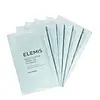What's inside
What's inside
 Key Ingredients
Key Ingredients

 Benefits
Benefits

 Concerns
Concerns

 Ingredients Side-by-side
Ingredients Side-by-side

Water
Skin ConditioningGlycerin
HumectantPropylene Glycol
HumectantCarrageenan
Saccharide Isomerate
HumectantSodium Hyaluronate
HumectantPolyglutamic Acid
Skin ConditioningYeast Beta-Glucan
Skin Conditioning1,2-Hexanediol
Skin ConditioningXanthan Gum
EmulsifyingHydroxyacetophenone
AntioxidantSynthetic Fluorphlogopite
Caprylyl Glycol
EmollientEthylhexylglycerin
Skin ConditioningTin Oxide
AbrasivePhenoxyethanol
PreservativeCI 77491
Cosmetic ColorantCI 77891
Cosmetic ColorantWater
Skin ConditioningGlycerin
HumectantCeratonia Siliqua Gum
EmollientCarrageenan
Phenoxyethanol
PreservativePanthenol
Skin ConditioningLactobacillus/Scutellaria Baicalensis Root/Camellia Sinensis Leaf/Artemisia Princeps Leaf/Houttuynia Cordata Leaf/Citrus Junos Fruit Extract Ferment Filtrate
AntimicrobialPEG-60 Hydrogenated Castor Oil
EmulsifyingSimmondsia Chinensis Seed Oil
EmollientMaris Aqua
HumectantEthylhexylglycerin
Skin ConditioningSodium Hyaluronate
HumectantCaprylyl Glycol
Emollient1,2-Hexanediol
Skin ConditioningPlankton Extract
Skin ConditioningDisodium EDTA
Chlorella Vulgaris Extract
Skin ConditioningPotassium Hydroxide
BufferingRicinus Communis Seed Oil
MaskingButylene Glycol
HumectantPadina Pavonica Thallus Extract
Skin ConditioningWater, Glycerin, Ceratonia Siliqua Gum, Carrageenan, Phenoxyethanol, Panthenol, Lactobacillus/Scutellaria Baicalensis Root/Camellia Sinensis Leaf/Artemisia Princeps Leaf/Houttuynia Cordata Leaf/Citrus Junos Fruit Extract Ferment Filtrate, PEG-60 Hydrogenated Castor Oil, Simmondsia Chinensis Seed Oil, Maris Aqua, Ethylhexylglycerin, Sodium Hyaluronate, Caprylyl Glycol, 1,2-Hexanediol, Plankton Extract, Disodium EDTA, Chlorella Vulgaris Extract, Potassium Hydroxide, Ricinus Communis Seed Oil, Butylene Glycol, Padina Pavonica Thallus Extract
Ingredients Explained
These ingredients are found in both products.
Ingredients higher up in an ingredient list are typically present in a larger amount.
1,2-Hexanediol is a synthetic liquid and another multi-functional powerhouse.
It is a:
- Humectant, drawing moisture into the skin
- Emollient, helping to soften skin
- Solvent, dispersing and stabilizing formulas
- Preservative booster, enhancing the antimicrobial activity of other preservatives
Caprylyl Glycol is a humectant and emollient, meaning it attracts and preserves moisture.
It is a common ingredient in many products, especially those designed to hydrate skin. The primary benefits are retaining moisture, skin softening, and promoting a healthy skin barrier.
Though Caprylyl Glycol is an alcohol derived from fatty acids, it is not the kind that can dry out skin.
This ingredient is also used as a preservative to extend the life of products. It has slight antimicrobial properties.
Learn more about Caprylyl GlycolCarrageenan comes from red seaweed or algae. It is made up of polysaccharides and a highly flexible compound. Red algae cell walls are rich in carrageenan.
In cosmetics, it helps to thicken the texture. Studies show carrageenan extracted from red algae possess antioxidant properties. Components found in carrageenan include: lipids, fatty acids, Vitamin E, proteins, and several amino acids.
Learn more about different types of algae.
Carrageenan is also commonly used in medicine and food. It is a vegan alternative to animal-based gelatin.
Learn more about CarrageenanEthylhexylglycerin (we can't pronounce this either) is commonly used as a preservative and skin softener. It is derived from glyceryl.
You might see Ethylhexylglycerin often paired with other preservatives such as phenoxyethanol. Ethylhexylglycerin has been found to increase the effectiveness of these other preservatives.
Glycerin is already naturally found in your skin. It helps moisturize and protect your skin.
A study from 2016 found glycerin to be more effective as a humectant than AHAs and hyaluronic acid.
As a humectant, it helps the skin stay hydrated by pulling moisture to your skin. The low molecular weight of glycerin allows it to pull moisture into the deeper layers of your skin.
Hydrated skin improves your skin barrier; Your skin barrier helps protect against irritants and bacteria.
Glycerin has also been found to have antimicrobial and antiviral properties. Due to these properties, glycerin is often used in wound and burn treatments.
In cosmetics, glycerin is usually derived from plants such as soybean or palm. However, it can also be sourced from animals, such as tallow or animal fat.
This ingredient is organic, colorless, odorless, and non-toxic.
Glycerin is the name for this ingredient in American English. British English uses Glycerol/Glycerine.
Learn more about GlycerinPhenoxyethanol is a preservative that has germicide, antimicrobial, and aromatic properties. Studies show that phenoxyethanol can prevent microbial growth. By itself, it has a scent that is similar to that of a rose.
It's often used in formulations along with Caprylyl Glycol to preserve the shelf life of products.
Sodium Hyaluronate is hyaluronic acid's salt form. It is commonly derived from the sodium salt of hyaluronic acid.
Like hyaluronic acid, it is great at holding water and acts as a humectant. This makes it a great skin hydrating ingredient.
Sodium Hyaluronate is naturally occurring in our bodies and is mostly found in eye fluid and joints.
These are some other common types of Hyaluronic Acid:
Learn more about Sodium HyaluronateWater. It's the most common cosmetic ingredient of all. You'll usually see it at the top of ingredient lists, meaning that it makes up the largest part of the product.
So why is it so popular? Water most often acts as a solvent - this means that it helps dissolve other ingredients into the formulation.
You'll also recognize water as that liquid we all need to stay alive. If you see this, drink a glass of water. Stay hydrated!
Learn more about Water